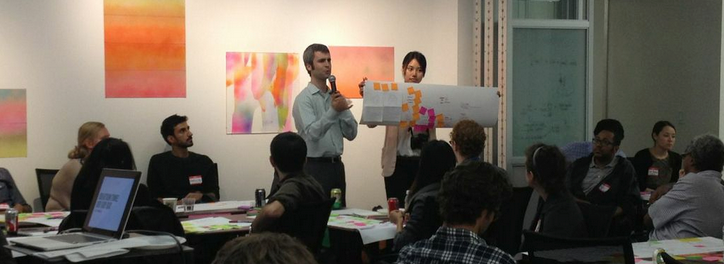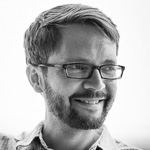Designing a responsive granting process to encourage nonprofits to explore disruptive technology adoption
We began with two questions:
- Are leading nonprofits fully making use of the explosion of digital and online platforms to find new ways to upend their program models, new ways to scale, or radically making their programs more effc
- And if not, could we bring the investing principles of the technology world to help leading non-profits find the time, money and resources to experiment with using digital platforms to change their program model?
Three months ago, Blue Ridge Foundation New York teamed up with the leading software firm ThoughtWorks and Parsons School of Design to create a grant program for poverty-related nonprofits that would try to bridge this effective organisation – technology adoption gap. We began by offering a package of support that we felt would address these needs – a combination of funding, incubation services, in-kind software support and design, and design thinking consulting. Each package was worth roughly $150,000. But we also knew that we didn’t have all the answers, and we wanted to design a transparent, responsive granting process to really pin-point non-profits’ digital technology needs.
What’s this gap, and why should funders care?
There are many effective organizations at the front line of addressing poverty-related challenges who are deeply familiar with the nuances of the social problems they are confronting, and have sophisticated practices and models – whether it’s helping low-income students get to and through college, reducing recidivism, or teaching parenting techniques that foster strong early childhood development.
With an explosion of mobile and online applications and platforms, there is great opportunity for such programs to be offered and supported cheaper, more effectively, and at greater scale. However, these experienced non-profits and the people they serve rarely get resources – people, money, and time – to think about how these advances in technology could lead to new mobile-leveraged program models. Non-profits are instead tied by their funding, or are tying things together on a shoestring budget.
They also can have difficulty truly experimenting, since they must often spell out precise activities and expected results in order to attract funder support. Innovation best practices, however, involve learning through trying, being responsive to feedback, and iterating along the way. We believed that finding a way to support and encourage non-profits to take intelligent risks – that might even lead to upending their own existing program model – around exploring new technology approaches would be great for them, and for the sector.
What was our responsive granting process?
We began with a simple principle. Rather than design a process to enable us, the foundation, to select winners as easily as possible, we would seek to add value to every applying organisation at every stage of the process. This was high-touch, but it also allowed us to learn more about technology needs as we went through the process. Specifically, this meant:
- Simple and staged application. We began by asking organisations for a 4 paragraph expression of interest, and then offered them feedback on whether that was in-line with what we were looking for. Our application requested 3-5 pages of a concept idea. We then selected 10 finalists. Our whole application is available here.
- Consultations. Blue Ridge’s Expert-in-Residence made himself available for 25 minute consultations with any interested group. Over 70 organisations benefited from this conversation – which also helped us determine needs and keep improving what we were offering.
- Workshops. Carlos Teixeira, a design strategies expert, and his graduate students from the Parsons School of Design Strategies ran two Phase Zero Design Workshops. 130 people went through a series of exercises with tools and frameworks to chart user journeys for stakeholders, and identified potential pain points and opportunities. A dozen ThoughtWorks engineers were on hand to offer feedback on how new software products or platforms could help them.
- Feedback. We solicited anonymous feedback from all organisations participating in the workshop about the value of the workshop and of the granting process thus far. We received over 100 responses, with an average response of 4.1/5 for the granting process.

Phase Zero Design Workshop to help grantees identify better ideas about how technology would help their stakeholders’ pain points.
Results of the responsive process The responsive granting process is person-intensive, and also requires foundation flexibility. As a result of our conversations, feedback, and assessing organisation needs, we added two components and have an outstanding question.
- Finalists’ program. We are offering these 10 finalist organisations the chance for a deeper consultation with ThoughtWorks to scope the size of their idea, so that they will have an advanced application which is funding-ready. So even for the eight who won't be offered the grant, they will be able to turn to other funders for support. We will select the two winners in December.
- Non-finalist workshops. For the 90% of organisations who are not finalists, we will offer thematic advice on the initial steps of their idea, many of which can leverage existing platforms or at least begin with bootstrapping a prototype that they can use for testing. Examples include: a workshop on selecting a platform for testing SMS marketing, how to test new cloud-based databases, and different options for online community creation.
- Solution suitability question. Many organizations’ needs are better served by using existing platforms rather than custom software, which is what our software firm specializes in. We’re still talking with them and others about how to serve these platform needs of our partner organisations.
We hope that this offers a few ideas about what a responsive granting process looks like. We’d be happy to chat with any foundations who want to know more.

